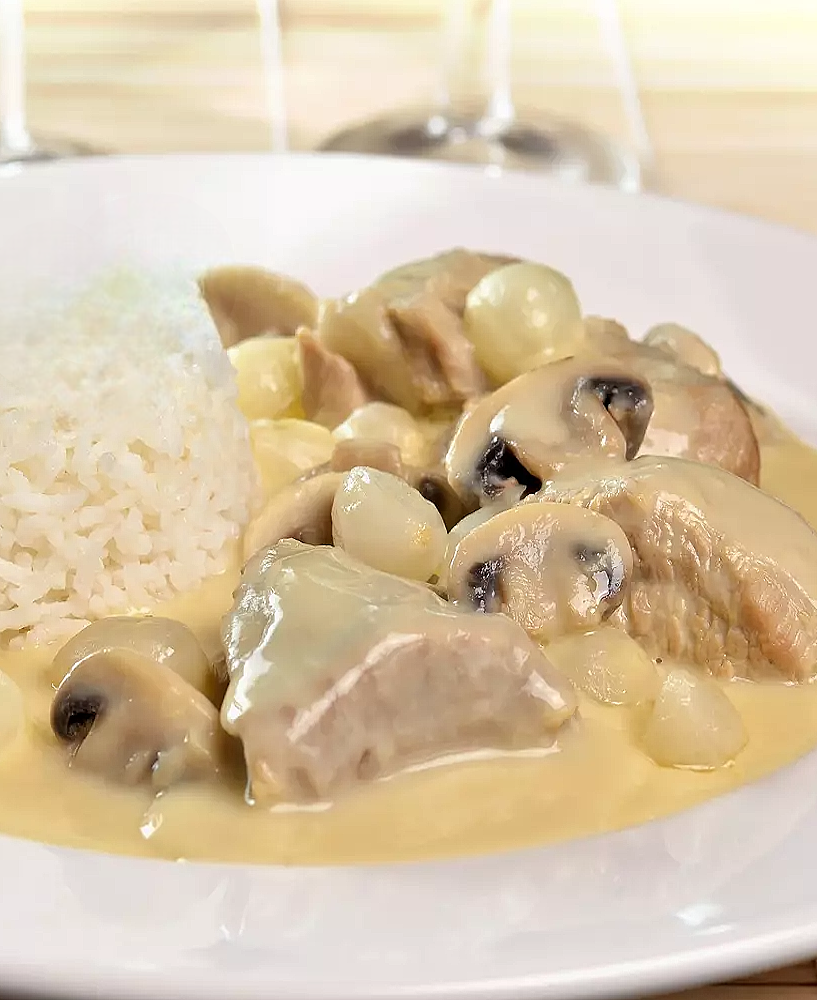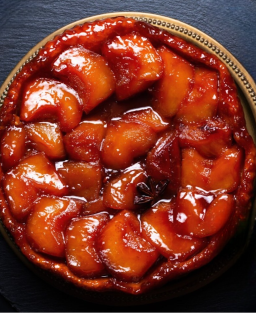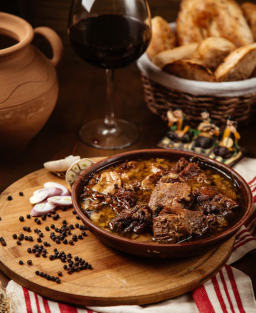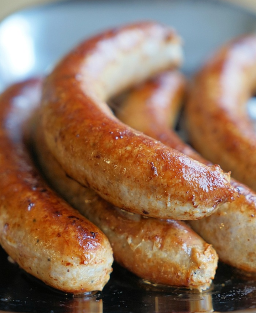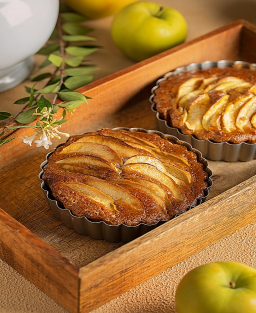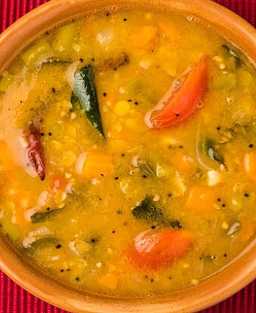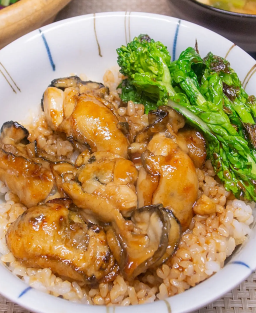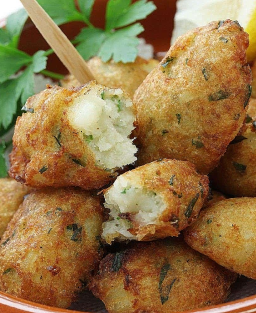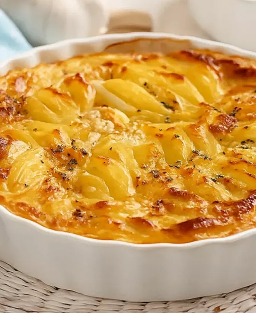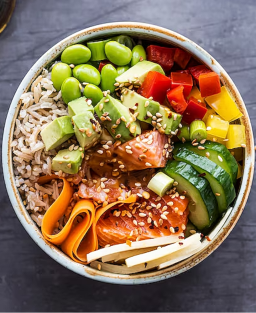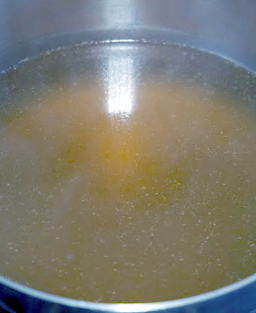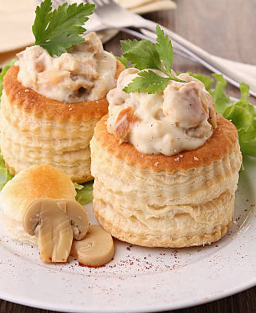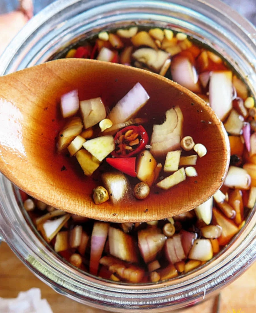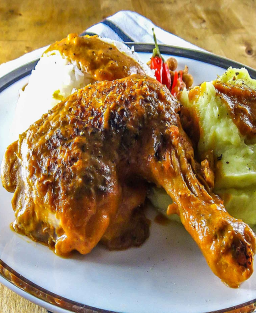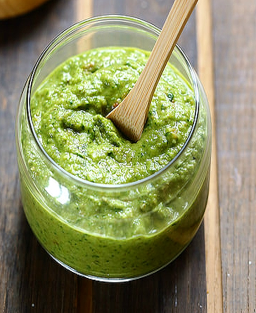Authentic Veal Blanquette Recipe According to Auguste Escoffier (Le Guide Culinaire, 1903)
Authentic Veal Blanquette Recipe According to Auguste Escoffier
(Le Guide Culinaire, 1903)
Origin of Veal Blanquette
Veal blanquette is a classic of French cuisine, often associated with bourgeois gastronomic heritage. Its name comes from the "white" color of the sauce, which is made from broth, butter, cream, and flour, without browning the ingredients by sautéing.
Historical Origin
-
17th century: The earliest mentions of blanquette describe it as a dish made from leftover roasted veal, served cold with a white sauce.
-
18th century: Some cookbooks start recommending poaching the meat instead of using already cooked leftovers, but the sauce remains white, thickened with flour and butter.
-
19th century: The recipe evolves into a stew cooked directly (no leftovers). At this time, it becomes the dish we know today: a stew without browning the meat.
Auguste Escoffier (late 19th to early 20th century) codified the recipe in Le Guide Culinaire, elevating this delicate preparation to culinary nobility.
Auguste Escoffier – Le Guide Culinaire (1903)
This is the major reference work codifying the great classics of French cuisine.
Escoffier offers a traditional veal blanquette where the meat is cooked in water without browning, with a sauce thickened by a white roux, then enriched with cream and egg yolk.
He emphasizes the importance of not coloring the meat and keeping the sauce perfectly white.
He distinguishes between “old-style” (rustic) blanquettes and “modern” (refined) versions.
1. Veal Blanquette According to Auguste Escoffier
(Le Guide Culinaire, 1903)
Ingredients (4 servings):
-
1.5 kg veal pieces: breast, shoulder, neck ribs
-
1 onion studded with cloves
-
Bouquet garni (thyme, bay leaf, parsley)
-
30 g butter
-
30 g flour
-
20 cl fresh cream
-
1 egg yolk
-
Lemon juice, salt, pepper
-
Paris mushrooms and pearl onions on the side
Steps:
-
Place the meat in cold water, slowly bring to a boil while skimming. Add the studded onion, bouquet garni, and carrot. Let simmer gently for 1.5 to 2 hours without browning.
-
Remove the meat and strain the broth.
-
Cook the garnish separately: mushrooms and pearl onions sautéed in butter.
1.1 Paris Mushrooms Turned and Cooked “À Blanc”
(English-style or white stewed cooking)
Ingredients:
-
250 g Paris mushrooms, small or medium
-
1 tbsp lemon juice
-
20 g butter
-
Pinch of salt
-
Enough water to cover
Preparation:
-
Peel or slice mushrooms as desired.
-
Place them in a saucepan with a knob of butter, a splash of lemon juice (to prevent browning), salt, and enough water to just cover.
-
Cover with buttered parchment paper or a lid to limit evaporation.
-
Bring to a gentle boil, then simmer over low heat 5–10 minutes until cooked. Mushrooms should stay white, tender, and glossy.
1.2 Pearl Onions Glazed “À Blanc”
Ingredients:
-
200 g peeled pearl onions
-
20 g butter
-
Pinch of sugar
-
Pinch of salt
-
Enough water to cover
Preparation:
-
Place peeled pearl onions in a sauté pan.
-
Add butter, sugar (for shine), salt, and enough water to cover.
-
Bring to a gentle boil.
-
Cover with buttered parchment paper or a lid.
-
Let glaze “à blanc”: the water slowly evaporates, onions cook absorbing butter and sugar, becoming shiny, tender, and translucent without browning.
Purpose
These two techniques preserve the white color and elegant look of the dish, consistent with the philosophy of blanquette as a white stew without browning, with gentle and refined garnishes.
Finishing the Escoffier Recipe
Make a white roux (butter + flour without browning), thin with broth, whisk until thickened.
Add the cream. Off the heat, incorporate the egg yolk diluted with a little sauce (liaison à la parisienne).
Return the meat and garnish, warm gently (never boil), adjust seasoning with lemon juice.
Note: Escoffier recommends noodles as accompaniment, but rice or potatoes also work.
2. Veal Blanquette According to Urbain Dubois & Émile Bernard
(La Cuisine Classique, 1856)
Ingredients (approximate):
Same veal cuts as Escoffier
Onion studded with cloves, carrot, bouquet garni
Broth or aromatic water
Garnish: Paris mushrooms, pearl onions
For liaison: white roux or cream + egg yolks
Particularity:
Dubois & Bernard set fundamental principles without precise proportions, emphasizing a white stew with traditional garnishes.
Quick Comparison
Common Garnishes:
-
Pearl onions glazed “à blanc”
-
Paris mushrooms cooked “à blanc”
These are now classic garnishes of blanquette, present in both culinary schools.
Notable Differences:
-
Escoffier (1903): Codifies an “old-style” blanquette with simple garnish: only mushrooms and pearl onions. His version is refined, streamlined, and standardized to match the brigade kitchen spirit. He rejects overly complex garnishes that would spoil the whiteness and balance of the dish.
-
Dubois & Bernard (1856): Mention garnishes “à la financière” including: truffles (seasonal), sweetbreads, rooster combs and kidneys, lamb tongue or brains. These were typical of Second Empire haute cuisine and Russian service popular at the time.
The Russian Service (Service à la Russe)
Definition:
Serving dishes one by one, in a set order, plated or portioned by the maître d’hôtel or server, from side tables, dish after dish.
Main features:
-
Multiple successive courses, each a single type of dish (soup, fish, meat, etc.)
-
Served hot and at ideal temperature
-
Individual portions served by staff
-
Coordinated service with care for presentation
Opposition to French Service:
| French Service | Russian Service |
|---|---|
| All dishes presented at once | Dishes served one by one |
| Lavish table display | More discreet, focused on tasting |
| Guests serve themselves | Staff serve guests individually |
| Visual impact, but food often lukewarm | Food served hot and perfectly cooked |
Origin:
Introduced to France by Prince Alexandre Kurakin, Russian ambassador under Napoleon I. Popularized in high society by Carême and Dubois in the 19th century.
Consequences:
More refined, individualized presentation; more balanced, digestible menus; structured meal progression.
These enriched variations turned blanquette into a festive dish, sometimes served in pastry cases (vol-au-vent or timbales).
Use of Carrot in Veal Blanquette
Escoffier (1903):
Carrot is optional, used to add subtle sweetness and aroma to the broth. Escoffier prefers visual and flavor purity, so carrot may be omitted to keep sauce as white as possible. If used, carrot is left whole and cooked gently without browning.
Dubois & Bernard (1856):
Carrot is a classic aromatic vegetable always included when cooking the meat. It flavors the broth more strongly, adding sweetness and roundness to the sauce. Carrot is placed whole in the pot to perfume without clouding the dish’s clarity.
This difference reflects two culinary approaches: Escoffier seeks maximum elegance and refinement, sometimes sacrificing certain aromatics, while Dubois & Bernard take a more traditional, flavor-first approach.
Famous Personalities and Veal Blanquette
Several notable figures expressed affection for veal blanquette, especially in the 19th and 20th centuries when it evolved from a family dish to a bourgeois and even presidential meal.
-
Raymond Poincaré (French President, 1913–1920): Enjoyed traditional French dishes including veal blanquette, sometimes served at official lunches.
-
Paul Bocuse (Chef, 20th century): Honored regional dishes; blanquette featured in traditional menus.
-
Georges Simenon (Writer, creator of Maigret): His character loved hearty dishes like blanquette.
-
François Mitterrand: Appreciated traditional cuisine; blanquette was on his private Élysée menu.
-
Jean-Pierre Coffe: Defended blanquette as a gem of home cooking—“sincere,” simple, and refined.
Cultural Anecdote
In the film Les Tontons Flingueurs (1963), family cooking and stews like blanquette are fondly referenced in witty dialogues, embedding this dish in the popular French imagination of the 20th century.











